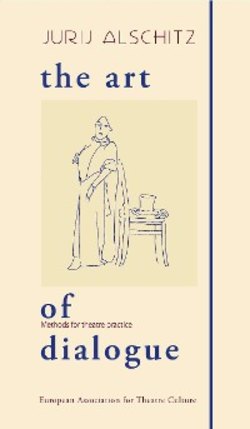Читать книгу The Art of Dialogue - Jurij Alschitz - Страница 4
ОглавлениеGood Morning
This book is, to some extent, a dialogue. A dialogue with dialogue, a dialogue with my theatre colleagues and a dialogue with myself. In any case, that’s what I felt it to be as I was writing it. It’s hard to write by yourself. But it’s better, more free, to be in a dialogue with someone else, and in that way, dialogue moves not along previously constructed traks or in one direction, but it lives easily and naturally. You can talk about one thing, then go on to another, deny that which you thought before or say the thing which only just came into your head. It’s good to have revelations together, in dialogue. If I discover something alone, then where’s the pleasure in it?! But together - it’s more joyful. I want to tell you that Dialogue itself is not alone. There are many Dialogues. They are like the branches of one large tree, very similar to one another but, in fact, they are very different. And here am I, researching dialogues of all possible theatrical directions, different schools and traditions, and I have come to the conclusion that although there are shared roots, one trunk from which the majority of dialogues have developed and are developing, nevertheless, there was not and is not a single method or set of rules, established once and for all, for the creation of dialogue. So there. Personally it makes me happy, since it gives me the freedom and the possibility of making my own division of dialogues into different types, and researching those which are the most interesting to me. Freedom in research is the most important thing.
I can’t say that in this book I will talk only about contemporary types of dialogues or about my most recent experiments. Of course, they interest me a lot but classical dialogues of world drama, their founding principles, rules and methods of their construction are also uniquely beautiful and interesting. They all proved their artistic quality a long time ago; you could say, they passed the test of Time. They should not be cut off like dried leaves. They are far from dead. I agree that, at times, they seem old-fashioned, wordy, but believe me it is worth paying attention to them and their magic will shine through. Think how many inexplicable feelings and emotions are evoked when you happen to hear the sound of an old grandfather clock. It’s as if time goes by the same as always but also somehow differently. And if you ever happen to wind the crank on your grandmother’s sewing machine, I assure you, you will receive genuine aesthetic pleasure. It’s the same with old-fashioned dialogues. Try to play the dialogue from the good old plays by the same rules by which they were created, and you will not only discover the playwright but also the whole era. You will feel satisfaction. Of course, it will require no small amount patience from you but you will be rewarded artistically. It’s important. I’m certain that all forms of so-called “old” classic dialogues will be developed much further, or at least, strongly influence the appearance of new forms of dialogue. I also don’t doubt that the prospect of their development in contemporary theatre is not in conflict with other dialogues but in accordance with them, you could even say – there will be a melting of forms. Only a dialogue between different Dialogues will define the development of a future theatrical Dialogue. The question is elsewhere – are contemporary actors ready to hold such a complicated, multi-layered dialogue, a dialogue which consists of so many styles? Will they easily move from Shakespeare’s dialogue to Wilde, from Shakespeare to Beckett and be able to creatively combine them together?
I think they will be able to. But on one condition. If they open the concept of Dialogue for themselves. I repeat openly now, at the start of the book: there is no point assimilating exercises and different technical devices into your acting arsenal without your own understanding of what dialogue is. Nothing good will come of that. Memorise this at the outset – dialogue is not just a method of communicating on stage, it’s Theatre. My own research in the field of theatre history, let’s assume it’s not even the most profound, has shown that each theatrical direction, and each theatrical generation, differed from the previous one with its own particular understanding of stage dialogue. I’d go so far as to say almost all great actors, directors and playwrights, even within one generation, offered their own special construction of dialogue, their own understanding of its essence, aims and meaning. The secret of their success was that they could hear “their own” dialogue, the dialogue of “their own” times and the dialogue of “their own” Theatre. If you have “your own” Theatre, you will also have “your own” dialogue – that’s my main discovery. With this very discovery in mind, I want to repeat to you – my theatre colleagues, to actors and directors, who have played hundreds of dialogues on stage and to those who are only just beginning to gain experience, do not hurry to grab some ready-made recipes from this book and to get an answer to the question of how to construct a dialogue. First and foremost, you need no answers, but questions. It is better to start from a question.
